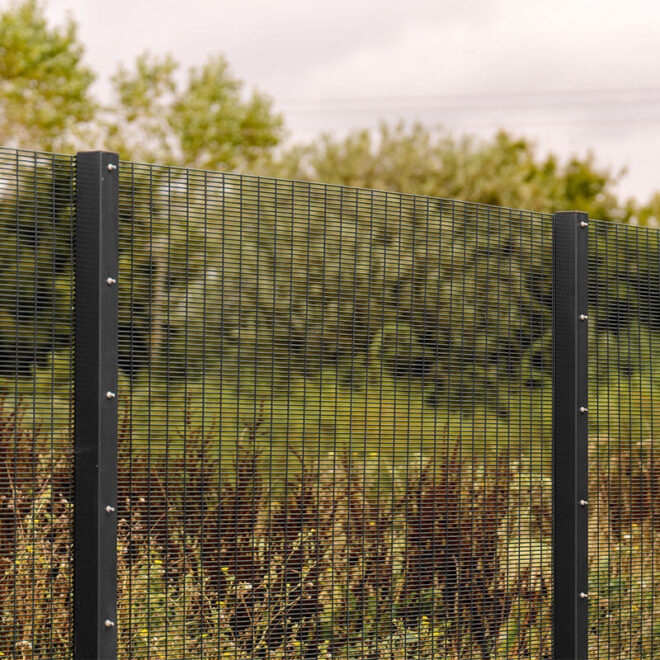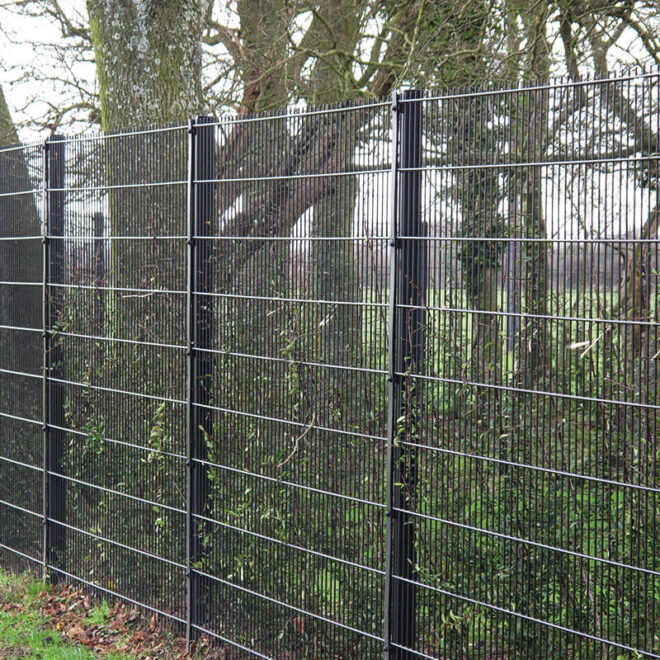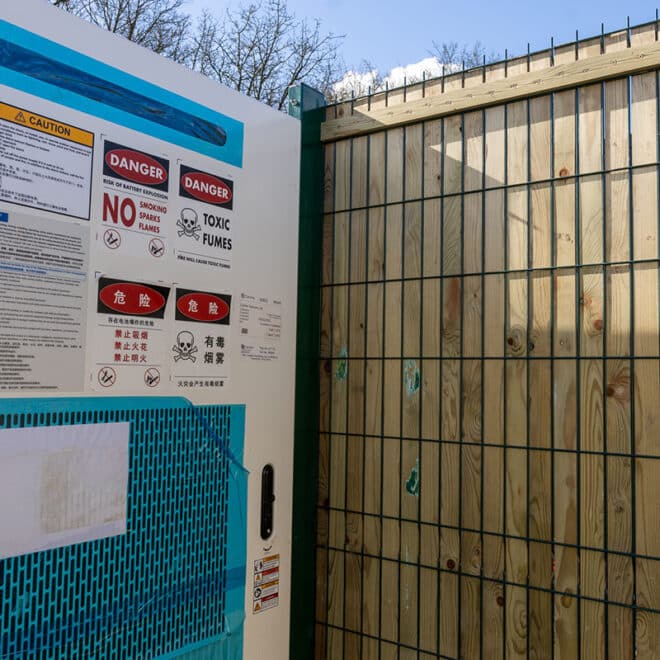Published:
As the UK continues to expand its renewable energy infrastructure, recent data and headlines suggest a troubling trend: organised criminals are increasingly targeting rural energy sites, including wind and solar farms.
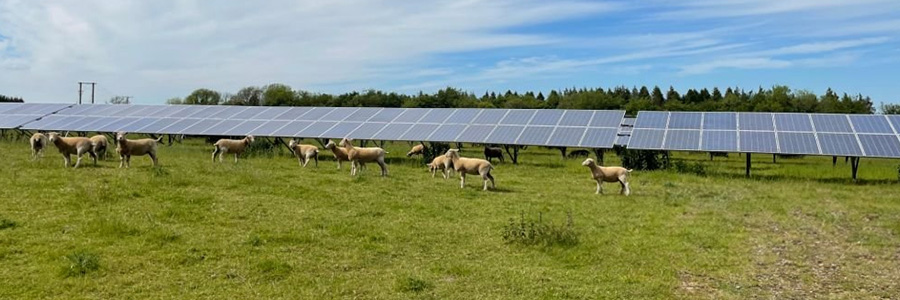
While the recently published NFU Mutual Rural Crime Report 2025 shows an overall fall in rural crime from 2023 to 2024, it also reveals that high-value sites remain vulnerable—particularly when security measures are insufficient.
So, what can solar farm operators and developers learn from these emerging patterns in rural theft? And what practical steps can be taken to protect valuable renewable energy infrastructure?
Rural Crime Is Changing: What the 2025 NFU Report Means for Solar Farms
The NFU Mutual Rural Crime Report 2025 presents some encouraging figures at first glance—overall reported rural crime fell by a modest percentage in 2024. Despite this promising headline, the story underneath becomes more complex. The reduction in headline incidents is being overshadowed by several growing concerns that have direct implications for the security of solar farm installations.
A key issue raised in the report is repeat victimisation. Farms and rural properties that suffer from one incident are increasingly likely to be targeted again—often by the same organised groups. These repeat attacks are not only costly but deeply disruptive to farming operations. They also expose a wider problem: once a site is identified as vulnerable, it becomes a magnet for criminal activity. This is a trend which has certainly crossed over to Solar Farms in recent years.
In addition, farmers and landowners surveyed in the report expressed a lack of faith in the current legislative framework to deter rural crime effectively. Many feel that existing laws and sentencing guidelines are insufficient to disrupt criminal networks or discourage repeat offending. When it comes to high-value infrastructure like solar farms, this is particularly worrying. Perpetrators believe the risks are low and the rewards high, and as such renewable sites have become an increasingly attractive target.
This is especially relevant for solar farm operators whose sites often sit on or near agricultural land. The implication is clear: even as rural crime overall drops, the scale, professionalism, and frequency of incidents involving large infrastructure are growing. That makes proactive security planning an essential part of renewable energy development.

Livestock Theft and Solar Sites: Why Shared Use Needs Shared Security
One key takeaway from the NFU Mutual report is the rise in livestock theft, which increased between 2023 and 2024. This is a major concern for farmers who use dual-purpose land—installing solar arrays on grazing pastures to maximise land use and income.
There are many advantages to this model. Grazing animals like sheep help manage grass growth beneath solar panels, reducing the need for mechanical or manual cutting. In return, farmers receive rental income or additional revenue from renewable generation. But this shared use also introduces new security challenges.
Without strong perimeter protection, both livestock and valuable solar infrastructure are vulnerable to theft or damage. In some cases, thieves may even target both in a single incident, leading to significant losses and downtime. That’s why farms integrating solar with grazing must adopt a holistic approach to site security, ensuring fencing systems are robust enough to deter both animal and asset theft.

Renewable Energy Crime Wave: Copper Theft Hits Wind and Solar Sites
A more recent and alarming development is the dramatic increase in copper cable thefts from renewable energy sites—particularly windfarms. According to a June 2025 article in The Guardian, multiple windfarm sites in England have suffered coordinated attacks from organised criminal groups.
“The current state of offending is exceptional and unlike anything I’ve seen,” said Richard Crisp, an intelligence analyst at DeterTech. “We would typically expect to receive about four reports per year. It’s also noteworthy that those reports were typically of isolated single turbines, whereas in 2025 they have all been of large windfarms, operating multiple turbines.”
These incidents are not one-off thefts. They involve professional-level planning and execution, with criminals targeting multiple turbines at once and extracting large volumes of copper cable—causing both financial damage and service disruption. The trend is a clear warning sign for the solar sector, where high-voltage cabling and electrical inverters are similarly exposed in remote locations.
Like wind turbines, many solar farms lack dedicated security fencing, relying instead on minimal agricultural-style boundaries that offer little resistance or deterrence. This makes them an obvious next target.

Rural Doesn’t Mean Invisible: Why Solar Farms Are Now High-Value Targets
It’s a common misconception that the rural location of solar farms makes them less vulnerable to crime. In fact, rural isolation often creates the opposite effect—a lack of natural surveillance, slow response times from emergency services, and unprotected access routes combine to make solar sites easy pickings for experienced criminals.
As reported by Solar Power Portal, the UK is now entering a “peak period” of solar PV theft, with a “fully industrialised” network of criminals stripping infrastructure of panels, cabling, and other valuable materials. These groups are not deterred by the location—they’re attracted by it.
Typical weaknesses at risk include:
- Poor or non-existent perimeter security
- Unprotected inverters and junction boxes
- Inadequate lighting and surveillance systems
- Gaps in fencing or vulnerable access points
This reinforces the importance of moving beyond passive measures and investing in security systems designed for deterrence and delay.
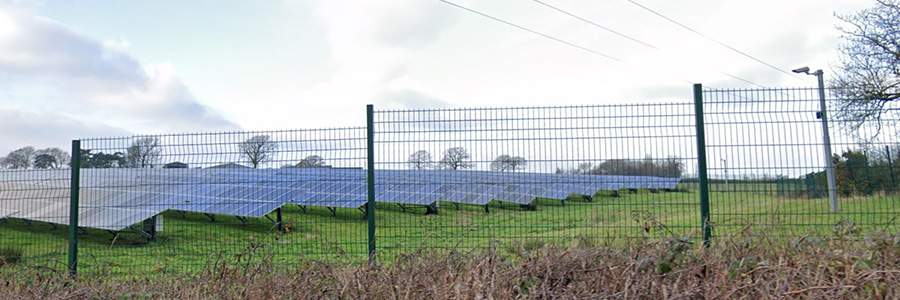
Proactive Perimeter Security for Solar Farms: A Necessary Investment
At Alexandra Security, we advocate for a layered security strategy centred around the security triangle: deter, detect, delay. The most effective way to implement this at scale is through a high-quality perimeter fencing system tailored to the site’s specific needs.
Our SolarGard fencing range has been developed specifically for solar farm security. Unlike standard agricultural fencing, it features:
- Welded mesh panels with anti-climb design
- Options for LPCB-certification to meet insurance and planning standards
- Compatibility with intruder detection and surveillance systems
- High resistance to tampering, cutting, and forced entry
Security-rated fencing serves multiple roles. It deters opportunistic criminals from even attempting a breach. It delays organised attackers long enough for detection and police response. And it reinforces the visible security presence of the site—sending a clear message that the installation is protected.

A Wake-Up Call for the Renewable Energy Sector
While the NFU Mutual figures may give a sense of relief that rural crime is declining overall, the reality for renewable energy operators is far more urgent. Organised crime is evolving, and it is now aggressively targeting high-value, remote, and under-protected infrastructure. That includes solar farms.
The increase in copper thefts from windfarms, the rise in livestock theft on shared land, and the detailed reconnaissance being carried out by criminals all point to one conclusion: the renewable sector can no longer afford weak security.
For developers and operators of solar farms, this is a call to action:
- Review existing security measures—are they robust enough to withstand an organised intrusion?
- Upgrade perimeter defences—are you relying on agricultural fencing where security-rated fencing is needed?
- Plan for long-term resilience—are your sites protected for the next decade, not just the next audit?
At Alexandra Security, we’re here to support you with expert advice, site-specific specifications, and British Standard-compliant fencing systems. Whether you’re in the early stages of planning or managing a legacy site in need of an upgrade, our SolarGard range delivers peace of mind and proven performance.
Protect your solar investment—before it becomes the next headline. Get in touch to discuss your solar farm perimeter security with our team of specialists.




